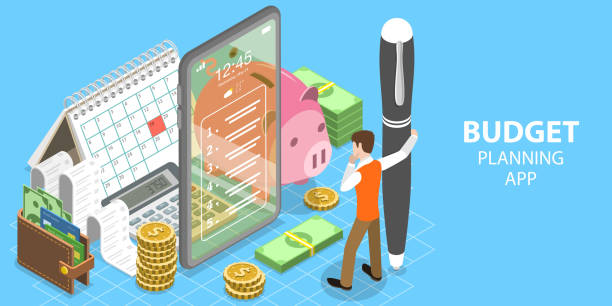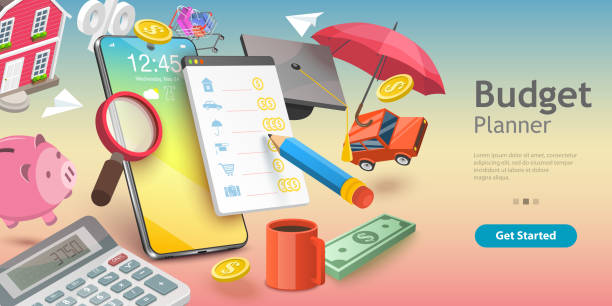In today’s financial landscape, personal loans have become increasingly popular for addressing a wide array of financial needs. Whether it’s consolidating debt, funding home renovations, covering medical expenses, financing a dream vacation, or managing wedding costs, a personal loan can provide the necessary financial boost. The availability of digital processes has further streamlined the application process, making it easier than ever to access funds. However, with numerous lenders offering diverse terms, interest rates, and fees, selecting the right personal loan is a critical decision. This comprehensive guide explores the art of borrowing, providing detailed insights into how to choose the perfect loan for your specific needs.
Understanding Your Financial Needs

Before embarking on the loan selection process, it’s crucial to have a clear understanding of your financial needs. This involves identifying the exact purpose for which you require the loan and determining the precise amount needed.
- Defining the Purpose: Clearly define the reason for seeking a personal loan. Are you aiming to consolidate existing debts, finance a major purchase, or cover unexpected emergency expenses?. Knowing the purpose will guide you in choosing the appropriate loan amount and repayment schedule.
- Calculating the Loan Amount: Assess your financial requirements and opt for a loan amount that you can comfortably repay. Avoid borrowing more than necessary, as this can lead to unnecessary interest charges and a higher overall debt burden.
Key Factors to Consider
Once you have a firm grasp of your financial needs, it’s time to delve into the key factors that will influence your loan selection. These factors include interest rates, loan terms, eligibility criteria, and associated fees.
Interest Rates
The interest rate is the cost of borrowing money from the lender and is a critical factor to consider when choosing a personal loan. Lower interest rates translate to lower long-term repayment costs, resulting in a more manageable borrowing experience.
- Comparing Interest Rates: Shop around and compare interest rates offered by different lenders. Use online comparison tools to quickly assess various options and identify the most competitive rates.
- Fixed vs. Variable Interest Rates: Understand the difference between fixed and variable interest rates. Fixed interest rates remain constant throughout the loan term, providing predictability and stability. Variable interest rates, on the other hand, fluctuate with market conditions, potentially leading to higher or lower repayment costs.
- Negotiating Interest Rates: If you have a strong credit score and a good relationship with a particular bank, consider negotiating for a lower interest rate. Banks may also offer preferential rates to employees of well-reputed companies or during festive seasons.
Loan Terms

The loan term refers to the length of time you have to repay the loan. Shorter loan terms typically involve higher monthly payments but lower overall interest costs, while longer loan terms result in lower monthly payments but higher total interest expenses.
- Assessing Repayment Capacity: Evaluate your income and expenses to determine your ability to repay the loan comfortably. Choose a repayment period that aligns with your financial goals and income stability.
- Balancing Affordability and Interest Costs: Find a balance between affordable monthly payments and minimizing overall interest costs. Use online loan calculators to estimate monthly payments for different loan terms and interest rates.
Eligibility Criteria
Lenders have specific eligibility criteria that borrowers must meet to qualify for a personal loan. These criteria typically include age, income, credit score, and employment status.
- Checking Eligibility Requirements: Before applying for a loan, review the lender’s eligibility requirements to ensure you meet the necessary criteria. This can save you time and minimize the risk of rejection.
- Credit Score Importance: Your credit score plays a significant role in determining your loan eligibility and interest rate. A higher credit score increases your chances of approval and may qualify you for lower interest rates.
- Improving Credit Score: If your credit score is not ideal, take steps to improve it before applying for a loan. This may involve paying bills on time, reducing credit card balances, and avoiding new credit applications.
Fees and Charges
In addition to interest rates, personal loans may involve various fees and charges, such as processing fees, prepayment penalties, and late payment fees.
- Identifying All Applicable Fees: Carefully review the loan agreement to identify all applicable fees and charges. Factor these costs into your overall loan assessment to determine the true cost of borrowing.
- Negotiating or Avoiding Fees: In some cases, you may be able to negotiate or avoid certain fees, such as processing fees. Ask the lender if they are willing to waive or reduce these fees.
- Prepayment Penalties: Check for prepayment penalties, which are charges incurred if you repay the loan early. If you anticipate being able to repay the loan ahead of schedule, opt for a loan with no or low prepayment penalties.
Types of Personal Loans

Personal loans come in various forms, each catering to different needs and circumstances. Understanding the different types of personal loans can help you narrow down your options and choose the most suitable one for your specific requirements.
- Secured vs. Unsecured Loans: Secured loans require collateral, such as a car or home, to secure the loan. Unsecured loans, on the other hand, do not require collateral and are typically based on the borrower’s creditworthiness.
- Fixed-Rate vs. Variable-Rate Loans: Fixed-rate loans have a constant interest rate throughout the loan term, while variable-rate loans have an interest rate that can fluctuate with market conditions.
- Debt Consolidation Loans: Debt consolidation loans are used to combine multiple debts into a single loan, often with a lower interest rate.
- Personal Line of Credit: A personal line of credit is a revolving credit facility that allows you to borrow funds as needed, up to a certain limit.
Choosing the Right Lender
Selecting the right lender is just as important as choosing the right loan. Consider factors such as the lender’s reputation, customer service, and online presence.
- Researching Lenders: Research different lenders and read reviews to assess their reputation and customer service quality.
- Comparing Loan Offers: Obtain loan offers from multiple lenders and compare the terms, interest rates, fees, and repayment options.
- Considering Credit Unions: Credit unions may offer lower interest rates and more flexible terms compared to traditional banks.
- Online Lenders: Online lenders often provide a convenient and streamlined application process, with competitive interest rates and fees.
The Loan Application Process
Once you have chosen a lender and a loan, it’s time to begin the application process. This typically involves providing personal and financial information, as well as supporting documentation.
- Gathering Required Documents: Gather all necessary documents, such as proof of income, bank statements, and identification.
- Completing the Application: Fill out the loan application accurately and completely.
- Reviewing the Loan Agreement: Carefully review the loan agreement before signing to ensure you understand the terms and conditions.
Repaying the Loan
Once your loan is approved and funded, it’s crucial to manage your repayments responsibly to avoid late fees and maintain a good credit score.
- Making Timely Payments: Make all loan payments on time to avoid late fees and negative impacts on your credit score.
- Setting Up Automatic Payments: Consider setting up automatic payments to ensure timely payments and avoid missed deadlines.
- Communicating with the Lender: If you experience financial difficulties, communicate with your lender as soon as possible to explore options such as deferment or forbearance.
Conclusion
Choosing the perfect loan requires careful consideration of your financial needs, thorough research, and a clear understanding of the various factors involved. By following the steps outlined in this guide, you can navigate the loan selection process with confidence and secure a loan that aligns with your financial goals and repayment capabilities. Remember to borrow responsibly and prioritize your financial well-being throughout the borrowing journey.
Also Read : How To Secure The Best Loan Rates: Strategies For Savvy Borrowers



